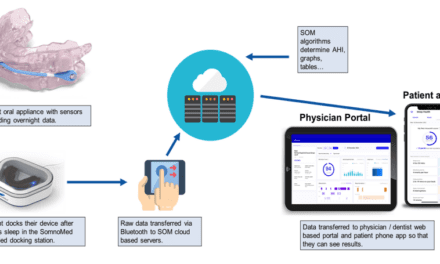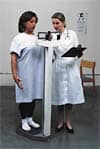Researchers have discovered a link to potentially understanding sleep disorders in children, according to a study published in the journal PLOS One. In a paper titled “Diurnal oscillations in human salivary microRNA and microbial transcription: Implications for human health and disease,” researchers from Penn State Medical Center and SUNY Upstate Medical University have discovered circadian molecules in saliva that are disrupted in children with sleep disorders. The results of this research, funded by Quadrant Biosciences Inc, an emerging life science company based in Syracuse, NY, holds promise for advancing the diagnosis and treatment of sleep disorders among children.
The study examined the levels of human microRNAs (miRNA) and microbial RNAs in the saliva of healthy children and adults across multiple days using next-generation sequencing. Sets of miRNA were identified that oscillate in circadian fashion and can be used to predict collection time with high precision and accuracy. The levels of some of these circadian-oscillating miRNAs (termed CircaMiRs) were found to correlate with circadian-oscillating microbial RNAs (termed CircaMicrobes) and targeted human genes that regulate circadian function and metabolism. Changes in microbial metabolic profiles across time were also identified—supporting strong temporal relationships between bacteria and their human hosts. The researchers found that while CircaMiRs and CircaMicrobes were accurate at predicting time of day in normal children and adults, the association broke down in children with sleep disorders.
According to Steven Hicks, MD, PhD, from Penn State Hershey and lead investigator on the project, “disturbances in sleep or disruption of circadian rhythm are a common problem in many chronic brain disorders, including autism, depression, Parkinson’s, and Alzheimer’s.” As a result, “seeing shifts in the diurnal patterns of RNA expression in biofluids like saliva,” says Hicks, “could have diagnostic potential in diseases with altered circadian rhythm and may one day provide a basis for targeted miRNA therapy of circadian disruptions.”
As Frank Middleton, PhD, co-lead investigator from SUNY Upstate Medical University points out, it also means that a considerable number of publications seeking to use peripheral miRNA expression as biomarkers of human disease could be greatly confounded by failing to account for time of collection. “This research represents a potential sea change in the way we look at miRNA as biomarkers for disease,” Middleton says. “Understanding the implications of shifting diurnal miRNA expression not only requires us to reevaluate the existing body of research in this area, but guides future studies to utilize CircaMiR levels to control for circadian variation in miRNA expression rather than simply focusing on average miRNA levels at a single collection point in comparison with a control cohort.”
One of the more interesting findings in the study revealed potential communication between the oral microbiome and the human host. Specifically, that miRNA-microbiome cross-talk may occur in a circadian manner. Hicks noted that given the diurnal rhythmicity of human metabolism, this finding has significant implications in human health and disease. “Daily fluctuations in host-microbiome interaction, for instance, may inform risk for obesity, or insulin resistance,” Hicks says. “Alternatively, disruptions in miRNA-microbiome networks may unsettle the gut-brain-axis, a concept implicated in neurologic disorders such as Parkinson’s and ASD, both of which are associated with disordered sleep.”
Richard Uhlig, founder and CEO of Quadrant Biosciences, and one of the co-authors of the study , says, “It seems that each day we are learning more and more about the significant role epigenetics plays in the overall function of our bodies. Not only are discoveries like this fascinating from a scientific perspective, but they hold enormous potential to positively impact the health of millions of people. So it is extremely gratifying to be a part of this research.”




